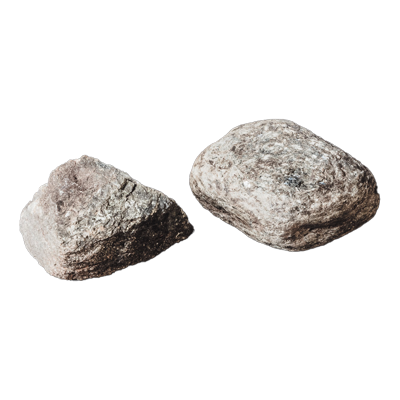SWEDEN ROCKS
- Forest Junkie

- Jun 1, 2024
- 2 min read
Updated: Sep 16
Where: All of Sweden
When: All seasons
What: Rocks
One of the first things you'll notice when visiting Sweden is that the country has not only a lot of forests and lakes but also rocks everywhere. Often beautifully covered in a thick layer of moss, making the landscape look like a fairytale. This made me wonder... Where did all these rocks come from? And what's the Swedish ground actually made of?
GLACIAL EROSION
During the last Ice Age, which ended about 10,000 years ago, thick ice sheets covered Sweden. These ice sheets scraped and eroded the top layers of the earth, bringing rocks and stones to the surface. When the ice melted, these eroded rocks were left behind. The movement of glaciers carried away much of the loose material, exposing the hard, underlying rocks.

GEOLOGICAL STRUCTURE
Sweden lies on the Baltic Shield, one of the oldest parts of the Earth's continental crust. This shield consists mainly of hard, crystalline rocks that resist erosion, often sticking up above the ground. The Baltic Shield is made up of very old (Precambrian) rocks that have surfaced through tectonic processes.

THE MOST COMMON NATURAL ROCK TYPES IN SWEDEN

Granite: A common, hard igneous rock rich in quartz, feldspar, and mica. It is found in large parts of Sweden, especially in Småland, where the famous "Röda Småland" granite comes from.

Gneiss: A metamorphic rock with a banded structure. It forms through the metamorphosis of granite or sedimentary rocks. Gneiss is widespread in Sweden, particularly in the western and southern parts of the country.

Schist: A metamorphic rock with a flaky structure. It contains a lot of mica, which makes it sparkle in the sunlight, and can be split into thin plates relatively easily. It is found in various regions, often alongside gneiss.

Quartz-rich Rocks: These include rocks rich in quartz, such as quartzite and sandstone. These rocks can be found in different parts of Sweden, often in association with metamorphic and igneous rocks.

Limestone and Marble: Limestone is a sedimentary rock mainly composed of calcium carbonate, while marble is a metamorphosed form of limestone. Limestone is mainly found in the southern regions like Skåne and Öland. Marble is mined in Dalarna and other areas.
IMPACT ON THE LANDSCAPE
So Sweden's naturally occurring rocks and stones are the result of a combination of glacial erosion and the presence of the Baltic Shield. This greatly influences the Swedish landscape, with rocky hills, cliffs, stone fields, and fairytale-like 'trollskogen' being characteristic of many areas. This gives Sweden's nature its unique and rugged vibe, and I love it!
RISING LAND
Interestingly, Sweden is also part of the post-glacial rebound zone. Every year, the land rises by about 4mm relative to the Baltic Sea. This ongoing rise is because the earth's crust is still adjusting and lifting after being compressed by the massive weight of ice sheets during the Ice Age.

There's much more to tell about Swedish geology. I'll soon take a plunge into the crystals and metals that can be found here. Stay tuned!
HELPFUL LINKS:
Fun video about Swedish geography:
Geological map of Sweden:
Geology of Sweden by SGU sgu.se/en/geology-of-sweden/#:~:text=Sweden















Comments